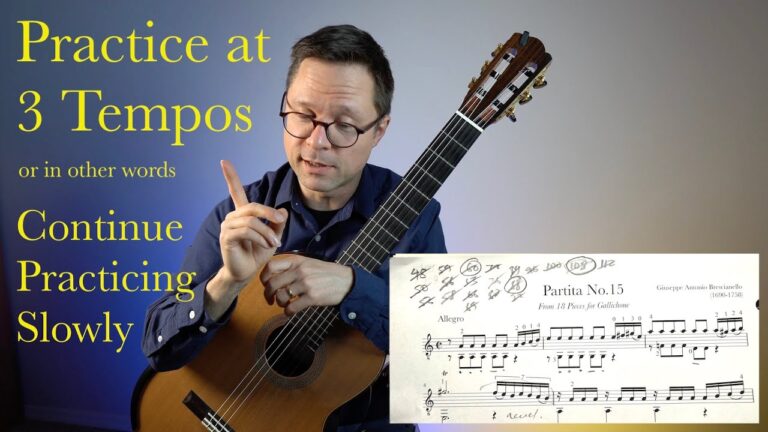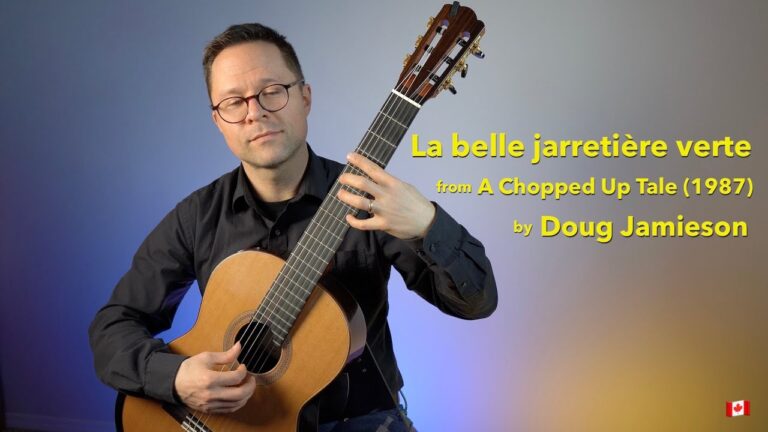Chasse, Op.51, No.9 by Napoléon Coste (1805 – 1883) and lesson for classical guitar. This comes from my Classical Guitar Repertoire Lessons Grade 5 book. Five pieces at the grade 5 level with dedicated lessons preparing you for each piece.
Chasse, No.9 from Récréation du Guitariste, Op.51 by Napoléon Coste (1805 – 1883). In this lesson I talk about the harmonics involved, the grace note (acciaccatura), and some of the chords. I also do a walk-through to talk about some phrasing and fingering.
The original composition and fingering is for 7 string guitar, therefore the modern six string guitarist may either tune down the 6th string or raise the lowest note (D) up an octave. I have chosen to raise up the lowest note and arrange the music for regular tuning. This allows the performer to keep the original slurs and majority of fingering.
Harmonics at the 12th and 7th Frets – Sometimes called natural or left hand harmonics on guitar, these are played by lightly touching a left hand finger on the string directly over the fret (the actual metal fret) and plucking the string as normal with the right hand. Do not push the string down to the fret, simply place the finger lightly on the string and remove it after plucking it (allowing the string to vibrate).
Below is an additional lesson on harmonics from my Classical Guitar Technique book.
Grace Note (acciaccatura) in Bar 15 – The acciaccatura (Italian to-crush) is a grace note that decorates the primary written note. In the 18th century the acciaccatura was often played on the beat but by the 19th century, depending on the context and composer, the note could be played before or on the beat and is largely a question of taste and performance practice. That said, the rhythm is often quick enough to be indistinguishably crushed into the rhythm. There is much debate about grace note performance, but at the student level the important thing is to add the decorative grace note without disturbing the primary rhythmic pulse. For this reason I recommend playing the ornament on the beat, crushing it into the same beat as the bass note and inner voice.





You do have my respect on your skill and ability to play and instruct.,